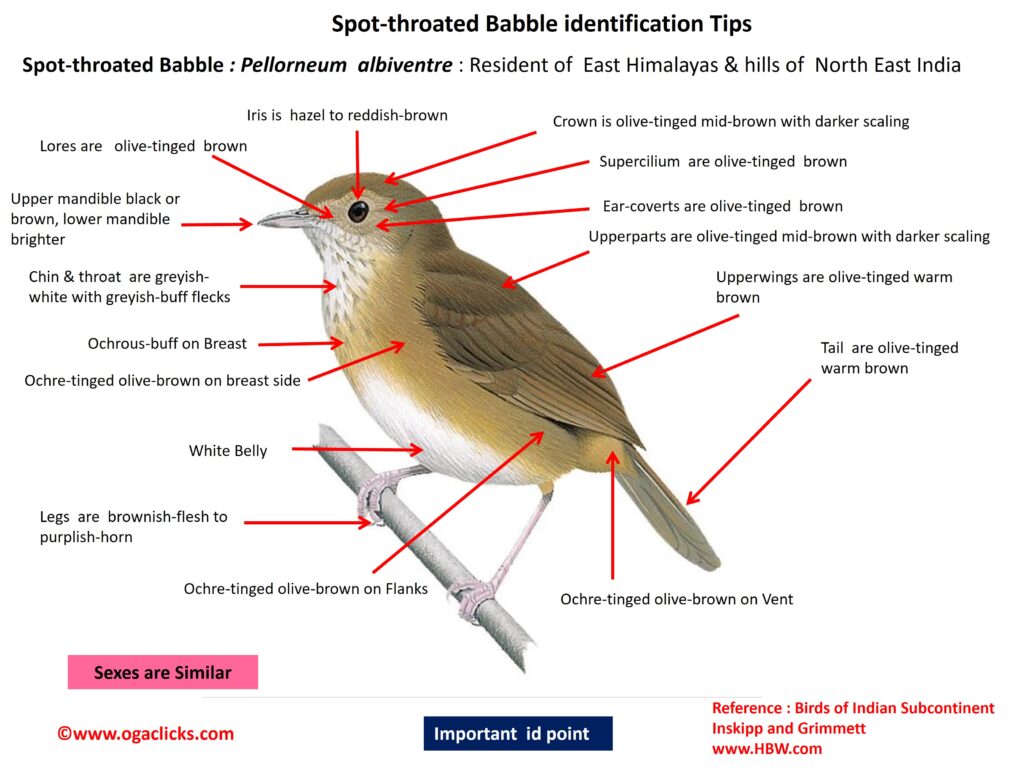
Spot-throated Babbler Pellorneum albiventre
Etymology :
- Pellorneum : Greek word pellos- dark-coloured; orneon –bird.
- Albiventre : Latin word albus –white ; venter – belly
Vernacular Name: Cachar: Dao-chiki
Distribution in India: Resident of East Himalayan Foothills, hills of North East India
Description: Size of 14–15 cm; Weight of 21–22 g. It is a small round-tailed babbler, olive-brown above and below, with lightly stippled whitish throat and white mid-belly. The nominate race has crown, neck-sides and back olive-tinged mid-brown with very indistinct darker scaling, becoming slightly warmer on plain rear upperparts, upperwing and tail. The face is like upperparts but paler; chin, submoustachial area and throat are greyish-white with greyish-buff flecks, breast is ochrous-buff, shading to ochre-tinged olive-brown on breast side, flanks, thighs and vent. The iris is hazel to reddish-brown; upper mandible black or brown, lower mandible brighter;. The legs are brownish-flesh to purplish-horn. Both the sexes are similar. The juvenile is warmer than adult, with rufescent edges of flight-feathers and greater wing-coverts.
Habitat: It is found in scrub, secondary growth, bamboo, grassland, clearings, undergrowth in pine forest. It is found from plains to 1830 m in India.
Food habits: It eats Insects. It is shy and very skulking; found in in pairs near the ground in dense cover.
Breeding habits: They breed in Apr–Jul. The nest is a small, compact globe or dome, sometimes semi-dome or deep cup. The nest is made of grasses and bamboo leaves, lined with grasses and moss roots, placed in bamboo clump, bush, among tree roots or in grass or weed clump. They lay a clutch of 2–5 eggs. The eggs are reddish-white or warm brick to pale cream or pale pink, profusely covered by speckles and tiny blotches of rather dark reddish-brown to pinkish-red. The incubation is done by female.